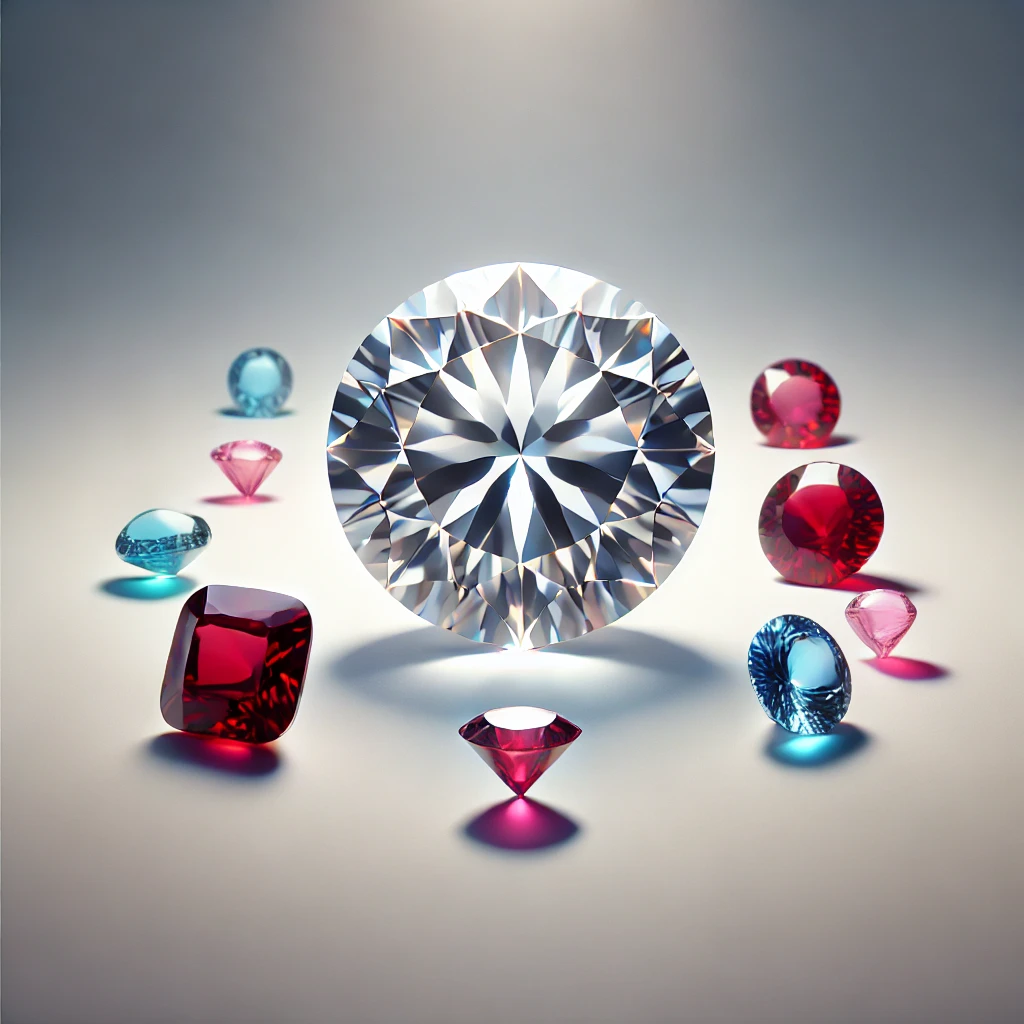
Diamonds are one of the most coveted gems in the world, synonymous with love, wealth, and status. But with their allure comes a host of myths and misconceptions that have been passed down for generations. From Hollywood blockbusters to everyday conversations, diamonds are often surrounded by misinformation. Are they really the rarest gemstone? Can they actually last forever? It’s time to set the record straight. In this article, we’ll debunk the biggest myths about diamonds, separating fact from fantasy so you can truly understand these sparkling stones.
Myth 1: Diamonds Are the Rarest Gemstone
Fact: While diamonds are rare and valuable, they are not the rarest gemstone. Many people assume that their high price means diamonds are the scarcest, but in reality, gems like rubies, emeralds, and certain types of sapphires are much rarer. What makes diamonds more prominent in the jewellery market is the industry’s strategic marketing efforts over the last century, especially De Beers’ iconic “A diamond is forever” campaign. While diamonds are precious, their relative abundance compared to other gems means they’re easier to find and mine.
Myth 2: Diamonds Are Indestructible
Fact: The notion that diamonds are indestructible is one of the most common myths, likely because diamonds are the hardest natural substance on Earth. While it’s true that diamonds rank a perfect 10 on the Mohs hardness scale, making them extremely scratch-resistant, they are not immune to damage. Diamonds can chip or crack if struck in just the right way, particularly along their cleavage planes, where the crystal structure is most vulnerable. So, while they are incredibly durable, it’s important to handle diamonds with care—especially when they’re set in jewellery.
Myth 3: The Bigger the Diamond, the More Valuable It Is
Fact: It’s easy to assume that size is the ultimate measure of a diamond’s value, but in reality, bigger isn’t always better. The value of a diamond is determined by the combination of the “Four Cs”—cut, clarity, colour, and carat weight. A well-cut, smaller diamond can often sparkle more brilliantly and be worth more than a larger diamond with poor clarity or colour. For example, a perfectly cut diamond with excellent clarity and minimal colour will outshine a bigger stone that lacks these qualities. So, when choosing a diamond, don’t be dazzled by size alone—pay attention to its overall quality.
Myth 4: All Diamonds Are Clear and White
Fact: While most people think of diamonds as being clear or white, they actually come in a wide range of colours. Coloured diamonds, also known as “fancy diamonds,” can be pink, blue, yellow, green, and even red. These fancy diamonds are highly prized, and their vivid hues often make them even more valuable than traditional white diamonds. Some of the world’s most famous diamonds, like the Hope Diamond or the Pink Star, are coloured diamonds that have achieved legendary status for both their rarity and their stunning appearance.
Myth 5: Lab-Grown Diamonds Are Fake
Fact: One of the most persistent misconceptions is that lab-grown diamonds are fake or less valuable than natural diamonds. The truth is that lab-grown diamonds are chemically, physically, and optically identical to natural diamonds. The only difference is their origin: lab-grown diamonds are created using advanced technology that replicates the natural diamond-forming process, but in a controlled environment. These diamonds are often more affordable than their natural counterparts, and because they are created ethically and sustainably, they’re becoming increasingly popular among eco-conscious consumers. However, they still hold significant value and are considered real diamonds.
Diamonds may be timeless, but the myths surrounding them are anything but. From misunderstandings about their rarity to false beliefs about their indestructibility, these misconceptions can cloud our understanding of what makes diamonds so special. By separating fact from fiction, you can make more informed decisions when it comes to purchasing, caring for, and appreciating these brilliant gems. Whether natural or lab-grown, big or small, diamonds remain symbols of beauty and elegance—just not for all the reasons we’ve been led to believe

